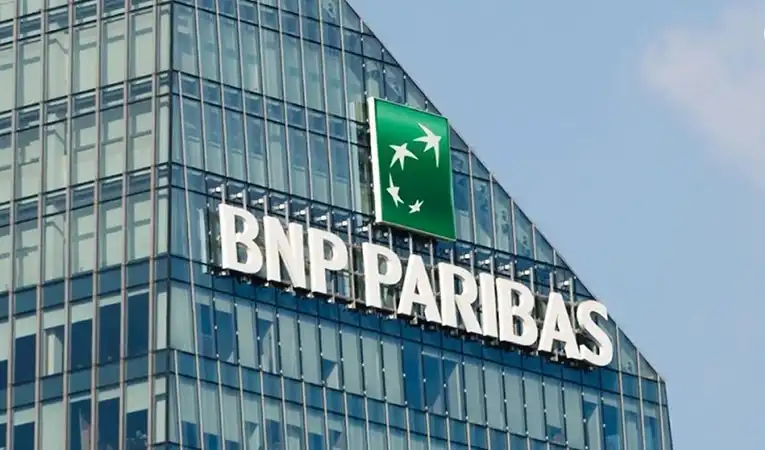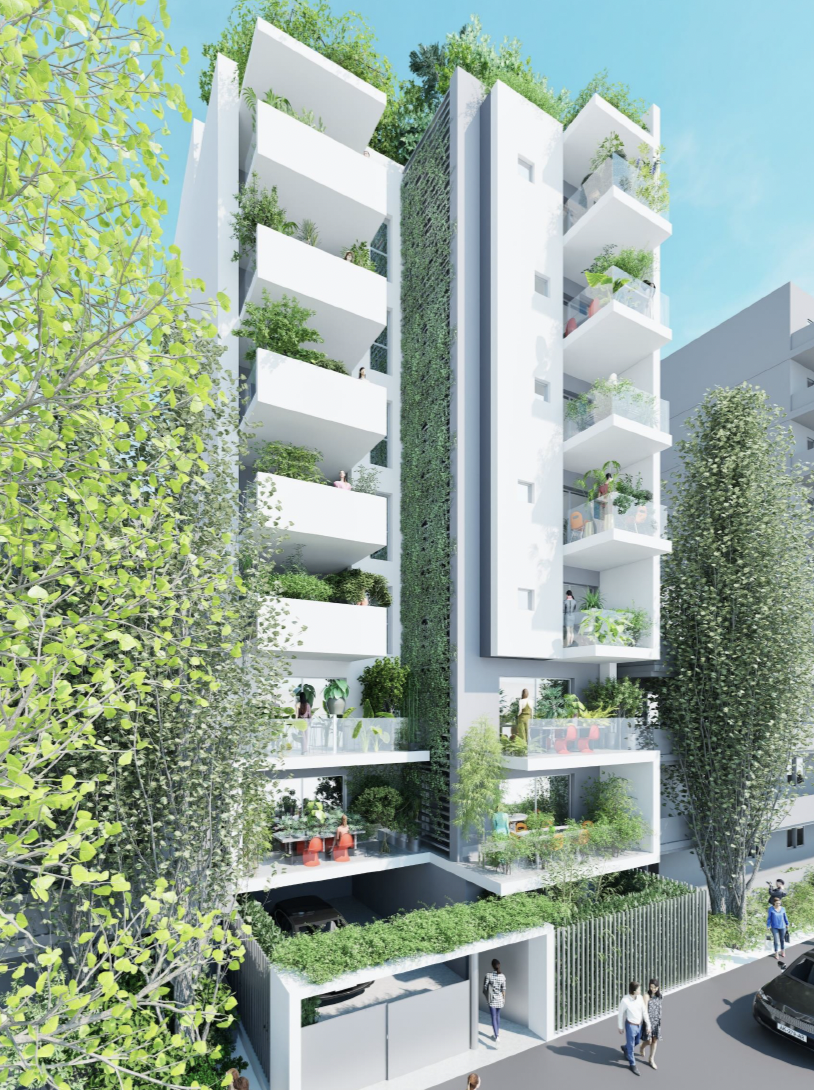Welcome to our blog, where we will explore the many reasons why investing in real estate in our city is a smart and lucrative choice. With a strong and stable housing market, a diverse and growing economy, and a favorable rental market, there are endless opportunities for individuals looking to enter the real estate investment market. The city’s commitment to urban revitalization and infrastructure development has transformed neighborhoods and created attractive living spaces. Moreover, with world-class education and healthcare facilities, historical appreciation, and demonstrated resilience, this city offers an ideal environment for real estate investment. Let’s dive in and discover the robust real estate investment opportunities that await in our thriving city.
Strong and Stable Housing Market
The strong and stable housing market is a crucial aspect of a flourishing economy. It plays a significant role in not just the financial well-being of individuals but also in the overall economic growth of a country. A strong housing market provides stability and confidence to both buyers and sellers, creating a positive cycle of investment, construction, and economic activity.
A stable housing market is characterized by several key factors. Firstly, it maintains a steady demand for housing, putting sellers in a favorable position. This demand can be driven by various factors such as a growing population, increased job opportunities, or migration to urban areas. Additionally, a stable housing market is also influenced by factors like low interest rates, a healthy economy, and accessible mortgage options.
One of the primary benefits of a strong housing market is the appreciation of property values over time. Historically, real estate has proven to be a reliable investment, with property values consistently increasing over the long term. This appreciation not only benefits homeowners but also attracts investors, fostering a robust real estate market with ample opportunities for growth and profit.
Diverse and Growing Economy
Diversity and growth are two of the key factors that contribute to a strong and prosperous economy. A diverse economy is one that is not dependent on a single industry or sector, but instead has a wide range of industries and businesses that contribute to its overall growth. This diversity helps to create a more stable and resilient economy, as it is less vulnerable to the fluctuations and downturns that can occur in any one industry.
A growing economy, on the other hand, is one that is continually expanding and developing. It is marked by increases in employment, income, and output, and is often accompanied by improvements in living standards and quality of life. A growing economy attracts businesses, investors, and talent, and provides opportunities for innovation, entrepreneurship, and economic mobility.
Having a diverse and growing economy has numerous benefits for individuals, businesses, and communities. First and foremost, it creates job opportunities. The presence of multiple industries means that there are a variety of roles and positions available, catering to different skillsets and interests. A diverse economy also promotes competition and innovation, as businesses strive to differentiate themselves and stay ahead in the market. This leads to improved products and services, and helps to drive economic growth.
- Job opportunities
- Competition and innovation
- Economic growth
Furthermore, a diverse and growing economy attracts investment. Investors are more likely to put their money into regions and countries that have a strong and expanding economic base, as they see greater potential for returns. This influx of investment stimulates further growth and development, creating a positive cycle of prosperity. In addition, a diverse economy is more resilient to economic shocks. If one sector experiences a downturn, other sectors can help to cushion the impact, minimizing the overall negative effects.
| Benefits of a Diverse and Growing Economy |
|---|
| Increased job opportunities |
| Promotes competition and innovation |
| Attracts investment |
| Resilient to economic shocks |
In conclusion, a diverse and growing economy is crucial for long-term prosperity and sustainability. It provides a wide range of job opportunities, fosters competition and innovation, attracts investment, and enhances resilience. By nurturing and supporting a diverse range of industries, policymakers and communities can lay the foundation for a strong and vibrant economy that benefits everyone.
Favorable Rental Market
A favorable rental market can be a great opportunity for both tenants and landlords alike. With a high demand for rental properties, tenants have a wide range of options to choose from, ensuring that they can find a property that meets their needs. Landlords, on the other hand, can benefit from a steady stream of rental income and the potential for long-term tenants.
One of the key advantages of a favorable rental market is the flexibility it provides for tenants. Renting a property allows individuals the freedom to choose where they live without the commitment of a long-term mortgage. This flexibility is especially important for young professionals who may need to relocate for work or individuals who are not ready to commit to homeownership.
Furthermore, a favorable rental market offers tenants the opportunity to live in desirable neighborhoods that may be unaffordable for purchasing a home. Whether it’s a trendy downtown area or a sought-after suburban community, tenants can enjoy all the benefits of these locations without the hefty price tag that comes with buying a property.
- Wide range of options for tenants to choose from
- Flexibility for individuals who may need to relocate for work
- Allows tenants to live in desirable neighborhoods
- Steady stream of rental income for landlords
- Potential for long-term tenants
| Advantages for Tenants | Advantages for Landlords |
|---|---|
| Flexibility | Steady rental income |
| Access to desirable neighborhoods | Potential for long-term tenants |
| Wide range of options |
Another benefit of a favorable rental market is the potential for long-term tenants. When tenants are satisfied with their rental experience, they are more likely to stay in the same property for an extended period. This not only provides stability for the landlord but also reduces the turnover costs associated with finding new tenants.
For landlords, a favorable rental market ensures a steady stream of rental income. With high demand, landlords can set competitive rental rates and potentially increase their profits. Additionally, landlords can benefit from the appreciation of their rental properties over time, providing them with a valuable and potentially lucrative investment.
In conclusion, a favorable rental market offers numerous advantages for both tenants and landlords. Tenants can enjoy flexibility and the opportunity to live in desirable areas, while landlords can benefit from steady rental income and the potential for long-term tenants. With these advantages, it’s no wonder why the rental market continues to thrive.
Urban Revitalization and Infrastructure Development
Urban revitalization and infrastructure development are vital components for the growth and sustainability of any city. With rapid urbanization and increasing population, it is essential to invest in the development of cities to ensure a high standard of living and a thriving economy. In this blog post, we will explore the significance of urban revitalization and infrastructure development and how they contribute to the overall progress of a city.
One of the key benefits of urban revitalization is the transformation of underutilized or deteriorating areas into vibrant and attractive spaces. This process involves the redevelopment of old buildings, creation of public spaces, and the improvement of existing infrastructure. By revitalizing urban areas, cities can enhance their appeal, attract investment, and provide better opportunities for businesses and residents.
Urban revitalization also plays a critical role in improving the quality of life for the residents. By upgrading infrastructure such as roads, public transportation systems, and utilities, cities can ensure efficient and convenient commuting, reduced congestion, and better access to amenities and services. Additionally, the creation of open green spaces, parks, and recreational areas promotes a healthier and more active lifestyle, improving the overall well-being of the community.
Infrastructure development is another crucial aspect of urban growth and prosperity. Building and upgrading infrastructure, such as bridges, airports, ports, and power plants, not only enhances connectivity and accessibility but also stimulates economic growth. Improved infrastructure attracts businesses, encourages investment, and creates job opportunities, contributing to the overall economic development of the city.
Furthermore, robust infrastructure development is particularly important in today’s digital age. As technology continues to advance, cities need to invest in modernizing their infrastructure to support new technologies such as smart grids, high-speed internet connectivity, and sustainable energy solutions. These advancements not only improve the efficiency of cities but also pave the way for the development of innovative industries and the creation of a digital economy.
In conclusion, urban revitalization and infrastructure development are essential for the growth, prosperity, and sustainability of cities. By transforming underutilized areas into vibrant spaces and upgrading infrastructure, cities can attract investment, improve the quality of life for residents, enhance economic opportunities, and foster innovation. As cities continue to evolve, prioritizing urban revitalization and infrastructure development will be crucial in creating thriving urban spaces that meet the needs of both present and future generations.
World-Class Education and Healthcare Facilities
When it comes to living in a city, there are several factors that contribute to a high quality of life. One of the most important elements is having access to world-class education and healthcare facilities. Whether you are a student or a working professional, these amenities play a crucial role in ensuring the well-being and success of individuals and families.
Having access to top-notch educational institutions is essential for students of all ages. Whether it is a preschool, K-12 school, or a university, a city with world-class education facilities provides an environment for students to thrive academically and socially. These institutions are equipped with state-of-the-art classrooms, libraries, laboratories, and sports facilities that enable students to develop their skills and pursue their passions. Additionally, highly qualified and experienced faculty members ensure that students receive the best possible education.
In addition to educational facilities, having access to quality healthcare services is equally important. A city with world-class healthcare facilities ensures that residents have access to top-notch medical care and treatment options. From general practitioners to specialized doctors, hospitals and clinics offer a wide range of healthcare services to cater to the diverse needs of individuals. Moreover, these facilities are equipped with advanced medical technology and equipment, ensuring accurate diagnoses and effective treatments.
Historical Appreciation and Resilience
When it comes to investing in real estate, one important factor to consider is the historical appreciation and resilience of a property or location. Historical appreciation refers to the increase in property value over time, while resilience refers to the ability of a property or location to withstand economic downturns and maintain its value. Both of these factors play a crucial role in determining the long-term success of a real estate investment.
One of the reasons why historical appreciation is important in real estate investing is that it can provide a solid return on investment. Properties located in areas with a long history of appreciation tend to attract more buyers and investors, leading to a higher demand and potentially higher prices. This means that if you invest in a property with a strong historical appreciation, you have a higher chance of seeing a significant increase in its value over time.
In addition to historical appreciation, resilience is another key factor to consider when investing in real estate. The ability of a property or location to withstand economic downturns and maintain its value is crucial, especially in uncertain times. Historically resilient areas tend to have a diversified and stable economy, which means that even during a recession or economic crisis, the property values in these areas are less likely to decline significantly.
- Location and Historical Significance: Properties located in areas with historical significance are often sought after by buyers and investors. Whether it’s a property with architectural significance or located in a neighborhood with a rich history, these properties tend to have a certain charm and appeal that can drive up their value over time.
- Historical Home Value Trends: Examining historical home value trends can provide valuable insights into the potential appreciation of a property. By analyzing the past performance of property values in a particular area, you can get an idea of how the market has evolved and make an informed decision about your investment.
- Resilient Economy: Investing in properties located in areas with a diverse and growing economy is a smart move. These areas are more likely to withstand economic downturns and continue to attract buyers and tenants, ensuring a steady demand for your investment property.
| Historical Appreciation Factors | Resilience Factors |
|---|---|
| Location and Historical Significance | Resilient Economy |
| Historical Home Value Trends |
In conclusion, historical appreciation and resilience are important considerations in real estate investing. Investing in properties with a strong historical appreciation can provide a solid return on investment, while resilient properties and locations are more likely to maintain their value even during economic downturns. By considering these factors and conducting thorough research, you can make informed decisions and maximize the success of your real estate investments.
Robust Real Estate Investment Opportunities
Investing in real estate can be a lucrative venture, especially when you have access to robust investment opportunities. The real estate market is known for its potential to generate substantial returns, making it a desirable option for investors looking to grow their wealth. Whether you are a seasoned investor or a newcomer to the industry, understanding the factors that contribute to robust real estate investment opportunities can help you make informed decisions and maximize your profits.
Demand and Market Stability: One of the key indicators of a robust real estate market is a strong demand for properties. When there is a high demand for both residential and commercial properties in a particular area, it signifies a healthy market. Additionally, a stable market with steady appreciation rates ensures that your investment retains its value over time.
Location and Accessibility: The location of a property plays a crucial role in determining its investment potential. Properties situated in prime locations, such as city centers or areas with high growth potential, often provide better investment opportunities. It is important to consider factors such as proximity to amenities, transportation links, and future development plans when evaluating a property’s location.
Rental Income Potential: Another factor to consider when assessing real estate investment opportunities is the rental income potential of a property. Properties that can generate consistent rental income due to high demand or desirable features, like proximity to universities or business districts, offer a steady stream of cash flow to investors. This can help offset mortgage costs and provide long-term returns on investment.
List of Factors Contributing to Robust Real Estate Investment Opportunities:
- Demand and market stability
- Location and accessibility
- Rental income potential
- Property appreciation rates
- Economic growth and job opportunities
- Infrastructure development
- Population growth and demographic trends
- Government policies and incentives
- Real estate market regulations
- Availability of financing options
Table Comparison of Different Real Estate Investment Opportunities:
| Investment Opportunity | Demand | Location | Rental Income Potential | Appreciation Rates |
|---|---|---|---|---|
| Residential Properties in City Center | High | Prime location | Steady rental income | Increased demand leads to appreciation |
| Commercial Properties near Business Districts | High | Strategic location | Attractive for businesses | Business growth results in value appreciation |
| Properties near Universities | High (student housing demand) | Close proximity to educational institutions | Student rental market | Growing demand for housing near universities drives appreciation |
It is essential to conduct thorough research and analysis before making any real estate investments. Consider working with a professional real estate agent or investment advisor who can provide valuable insights and guidance based on their expertise. By understanding the factors contributing to robust real estate investment opportunities and utilizing strategic investment strategies, you can position yourself for success in the real estate market.
Frequently Asked Questions
Question 1: What factors contribute to a strong and stable housing market?
A strong and stable housing market is influenced by factors such as low interest rates, low unemployment rates, and a balanced supply and demand for housing. Additionally, factors like a strong local economy, favorable mortgage lending conditions, and government policies that promote homeownership can also contribute to a stable housing market.
Question 2: How does a diverse and growing economy benefit the real estate market?
A diverse and growing economy creates a higher demand for properties, leading to increased property values and potential returns on investment. It attracts new businesses and residents, driving the demand for commercial and residential properties. A growing economy also provides employment opportunities, which can increase migration and the need for housing, thus positively impacting the real estate market.
Question 3: What makes a rental market favorable for investors?
A favorable rental market offers high rental demand, stable rental income, and favorable rental yields. Factors such as low vacancy rates, a growing population, and limited rental supply contribute to a favorable rental market. Additionally, rental market regulations and policies that protect both landlords and tenants can also attract investors and ensure a stable income stream.
Question 4: How does urban revitalization and infrastructure development impact real estate?
Urban revitalization and infrastructure development can significantly impact real estate. These initiatives often lead to increased property values in the surrounding areas due to improved amenities, transportation, and overall livability. Such revitalization efforts can attract businesses, residents, and investors, making it an attractive area for real estate investment.
Question 5: What are the advantages of world-class education and healthcare facilities for real estate?
World-class education and healthcare facilities are attractive to both residents and investors. Access to high-quality education and healthcare amenities increases the overall desirability of an area, leading to higher property values. Families often prioritize areas with renowned education options, while retirees and individuals value access to top-notch healthcare facilities. This demand can drive real estate appreciation and investment opportunities.
Question 6: Why is historical appreciation and resilience important in real estate?
Historical appreciation indicates that properties in a specific location have consistently increased in value over time. This provides confidence to investors as it suggests a higher chance of future appreciation. Resilience refers to a market’s ability to withstand economic downturns. Areas with resilient real estate markets tend to better withstand economic fluctuations, making them more stable and attractive to investors.
Question 7: How can I find robust real estate investment opportunities?
Finding robust real estate investment opportunities involves thorough research and analysis. One can consider working with a real estate agent specializing in investment properties, attending local real estate investment groups, and studying market trends and indicators. It is crucial to evaluate factors such as location, demand, potential return on investment, and long-term growth prospects when seeking out strong investment opportunities.
EDITOR
Categories
Recent Articles

NotteGlobal’s May 2024 Real Estate Report: A Comprehensive Analysis of Turkey’s Market Trends
June 22, 2024

New Immigration Policy in the US: A Major Step for Family Unity
June 21, 2024

Second Largest Investor Group in Greece: Turks
June 14, 2024

Exploring the Hidden Gems of Athens Riviera: A Guide to Luxurious Neighborhoods
June 3, 2024

Economic Stability and Growth in Turkey
May 31, 2024

Turkey’s Housing Sales Statistics for April 2024: A Comprehensive Analysis
May 24, 2024

BNP Paribas Forecasts End-of-Year USD/TRY Rate
May 3, 2024

Significant Updates to the Greece Golden Visa Program in 2024
April 29, 2024

€800,000: New Threshold for Greece’s Golden Visa
February 10, 2024

Golden Visa for Spain
December 27, 2023


